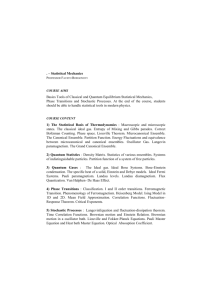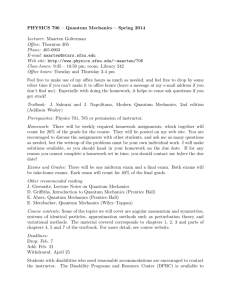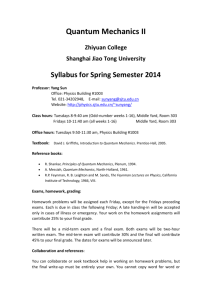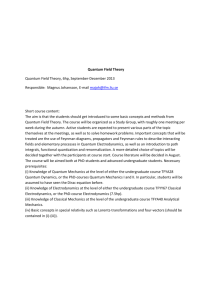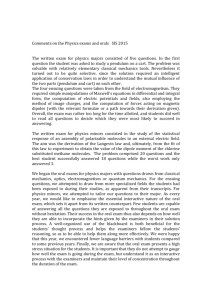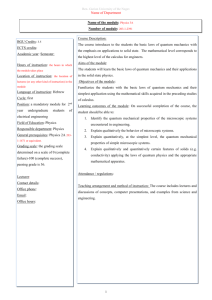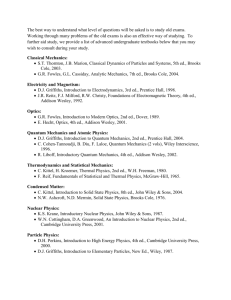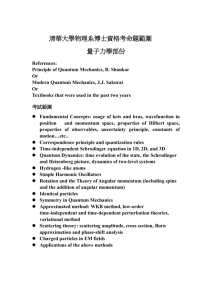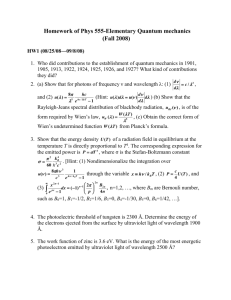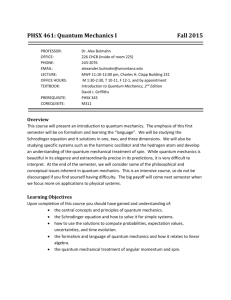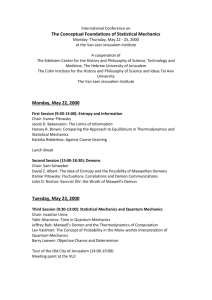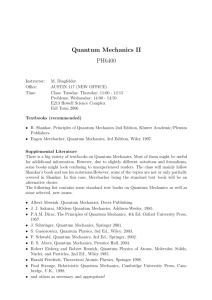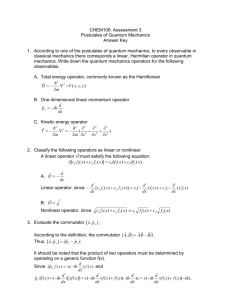clicking here
advertisement
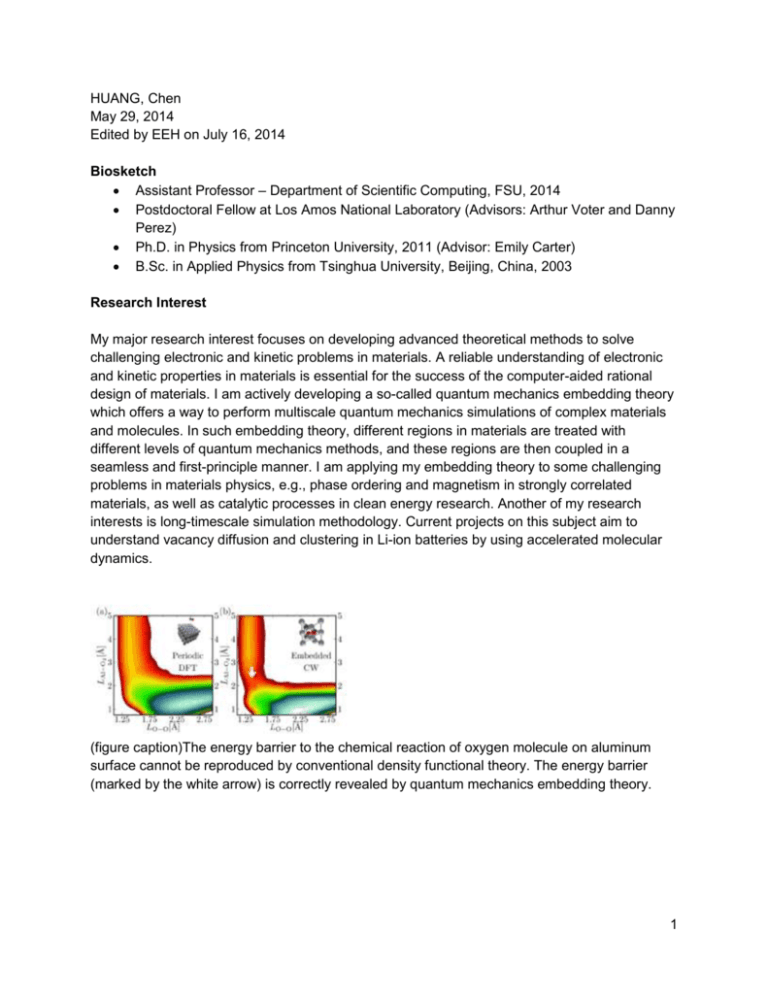
HUANG, Chen May 29, 2014 Edited by EEH on July 16, 2014 Biosketch Assistant Professor – Department of Scientific Computing, FSU, 2014 Postdoctoral Fellow at Los Amos National Laboratory (Advisors: Arthur Voter and Danny Perez) Ph.D. in Physics from Princeton University, 2011 (Advisor: Emily Carter) B.Sc. in Applied Physics from Tsinghua University, Beijing, China, 2003 Research Interest My major research interest focuses on developing advanced theoretical methods to solve challenging electronic and kinetic problems in materials. A reliable understanding of electronic and kinetic properties in materials is essential for the success of the computer-aided rational design of materials. I am actively developing a so-called quantum mechanics embedding theory which offers a way to perform multiscale quantum mechanics simulations of complex materials and molecules. In such embedding theory, different regions in materials are treated with different levels of quantum mechanics methods, and these regions are then coupled in a seamless and first-principle manner. I am applying my embedding theory to some challenging problems in materials physics, e.g., phase ordering and magnetism in strongly correlated materials, as well as catalytic processes in clean energy research. Another of my research interests is long-timescale simulation methodology. Current projects on this subject aim to understand vacancy diffusion and clustering in Li-ion batteries by using accelerated molecular dynamics. (figure caption)The energy barrier to the chemical reaction of oxygen molecule on aluminum surface cannot be reproduced by conventional density functional theory. The energy barrier (marked by the white arrow) is correctly revealed by quantum mechanics embedding theory. 1 (figure caption) A demonstration of the potential-functional embedding theory (PFET), which provides a seamless framework to perform multiscale quantum mechanics simulations. Each hydrogen atom (blue dots in fig.(a)) in the six-hydrogen chain is treated as a subsystem. The sum of all hydrogen electron densities (dashed lines in fig.(b)) from PFET matches the benchmark (solid black curve in fig.(b)) very well. 2




